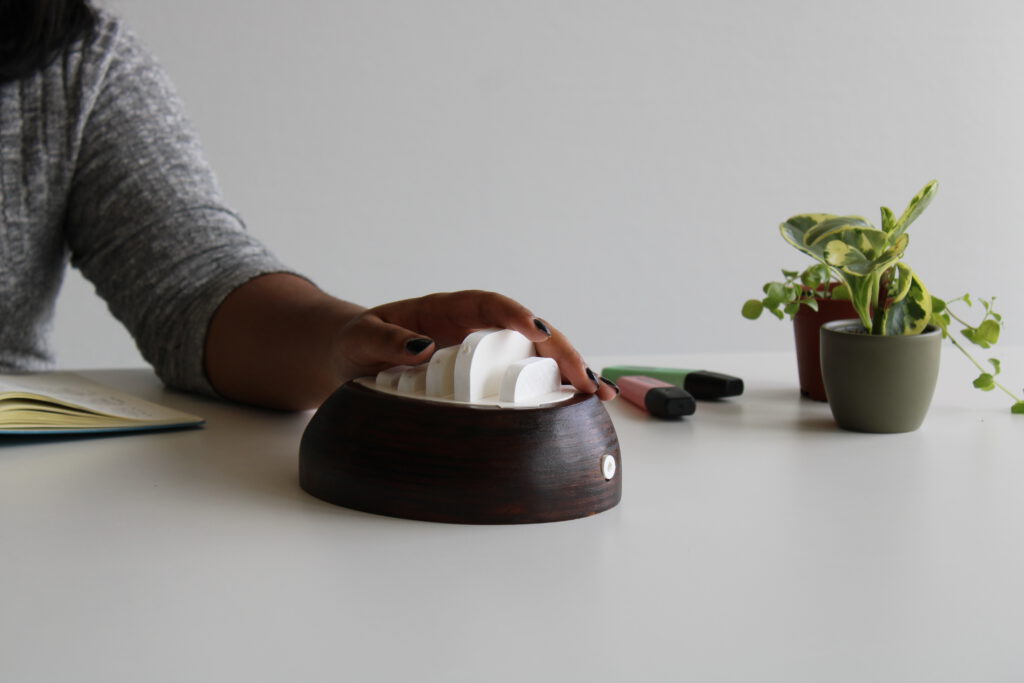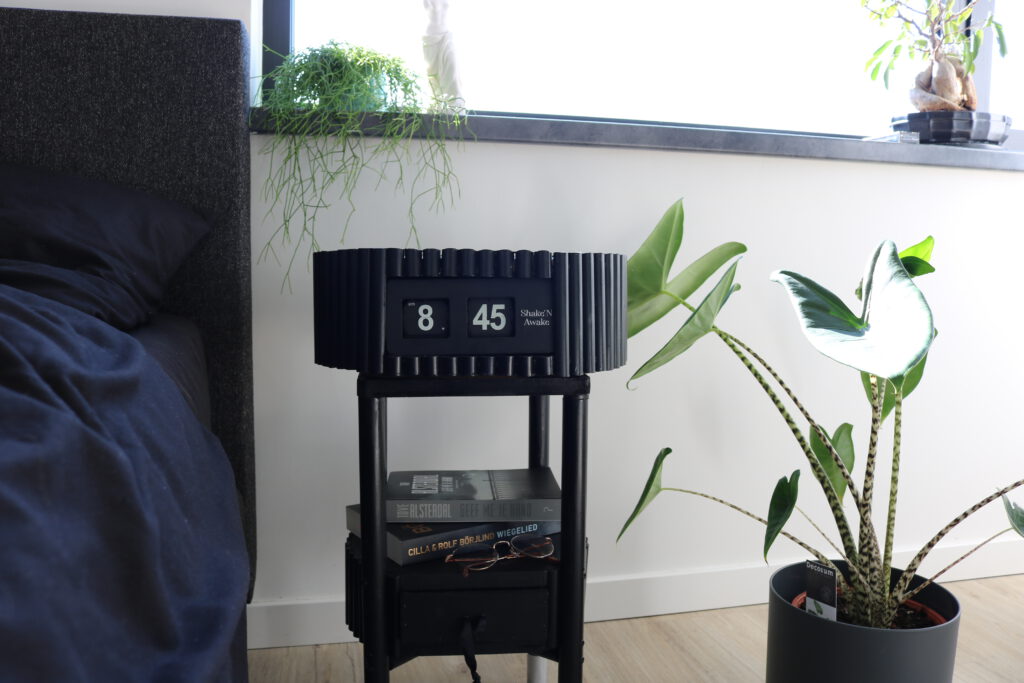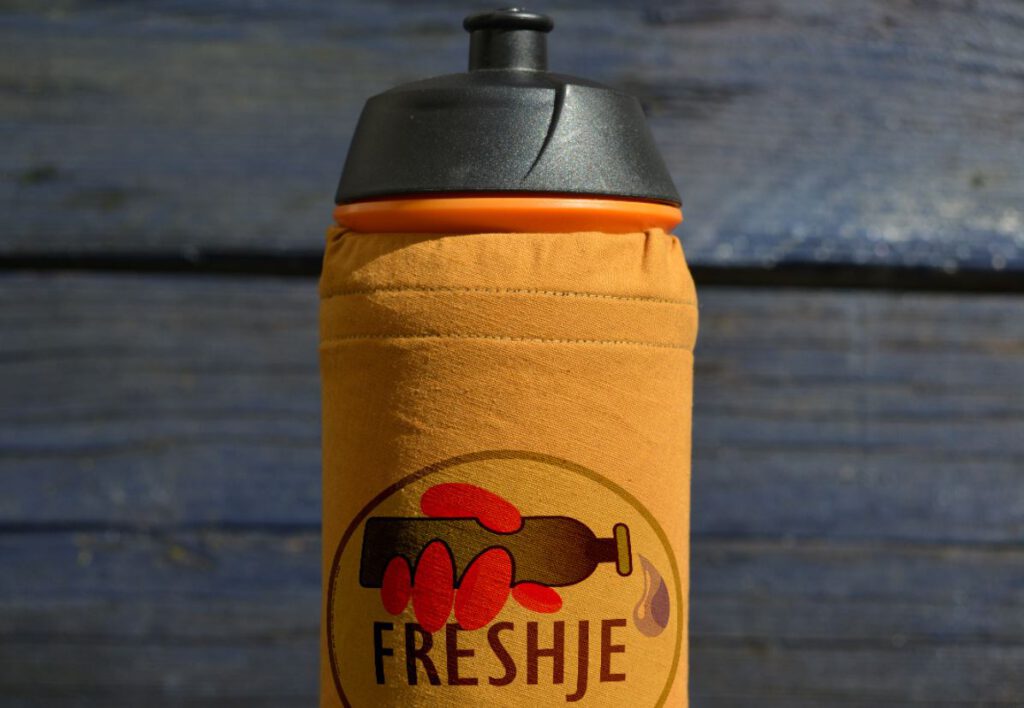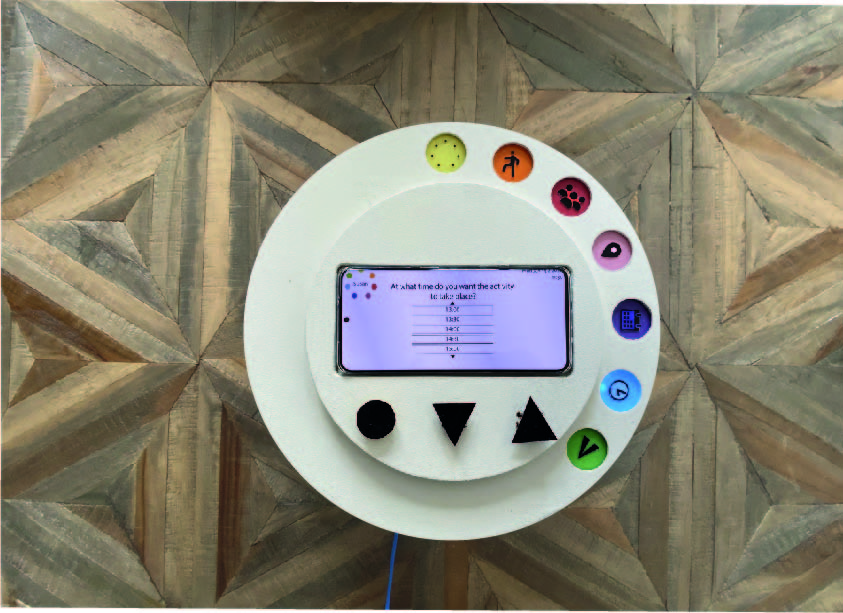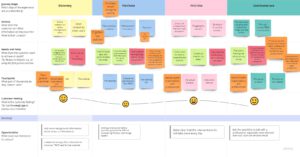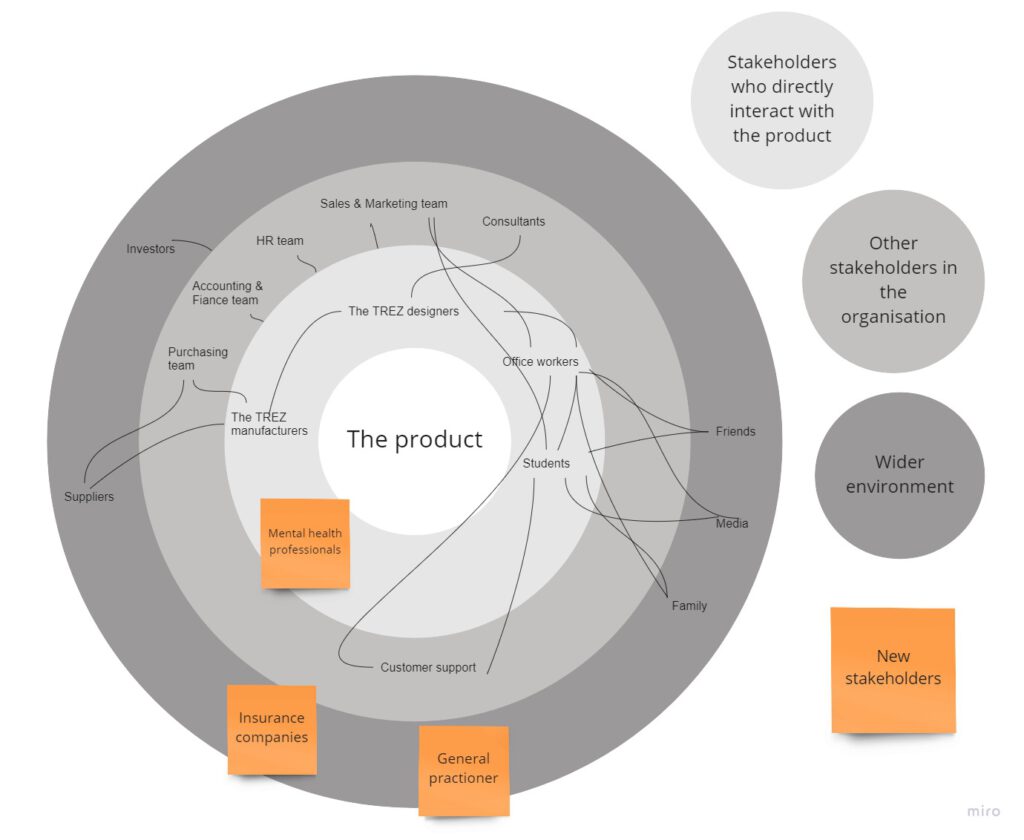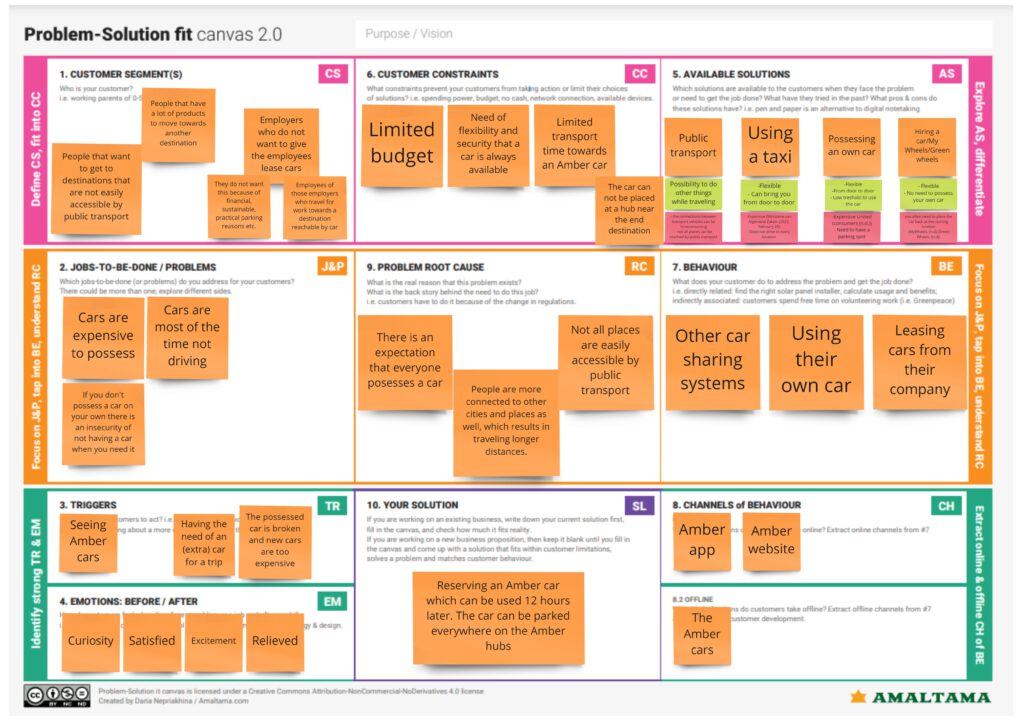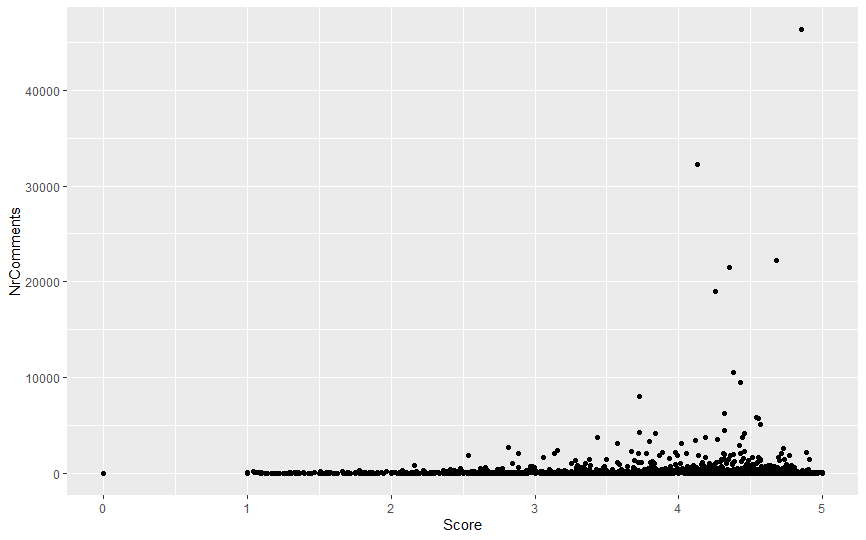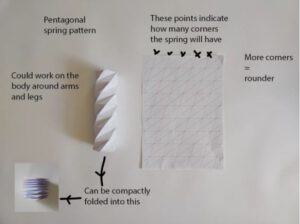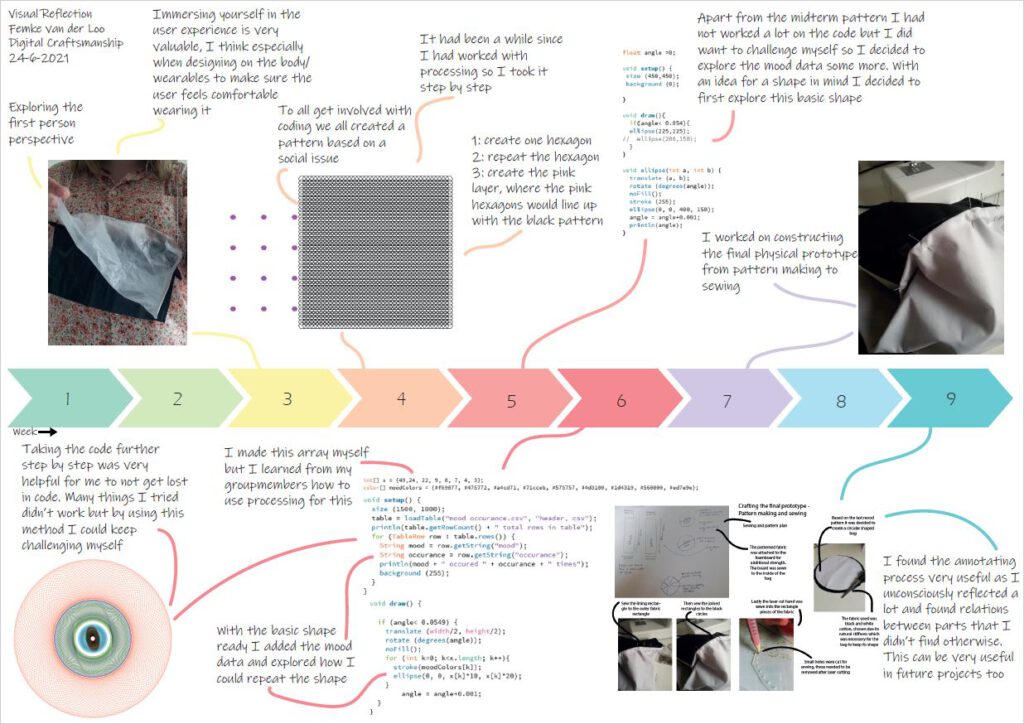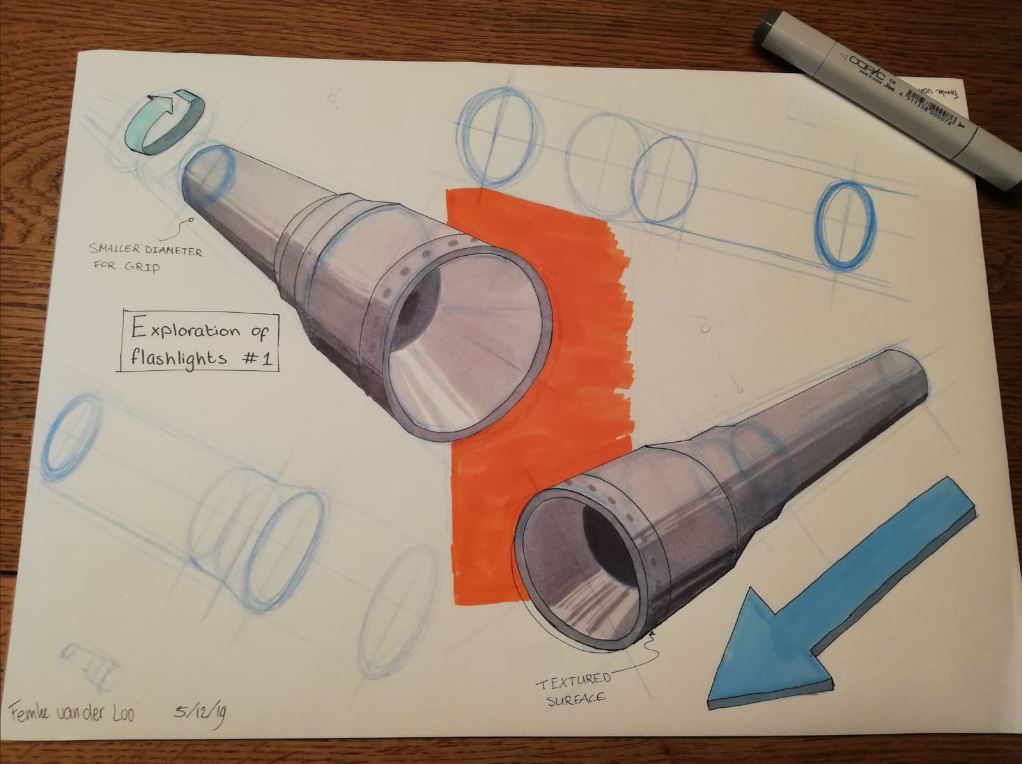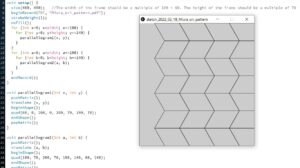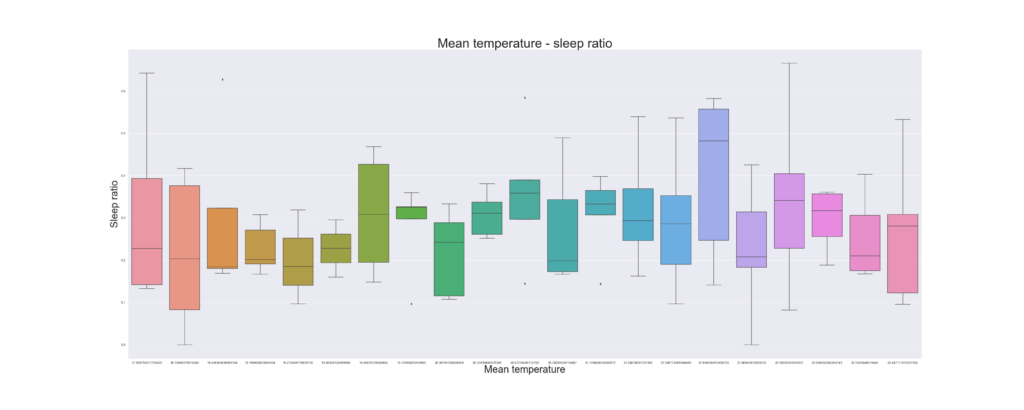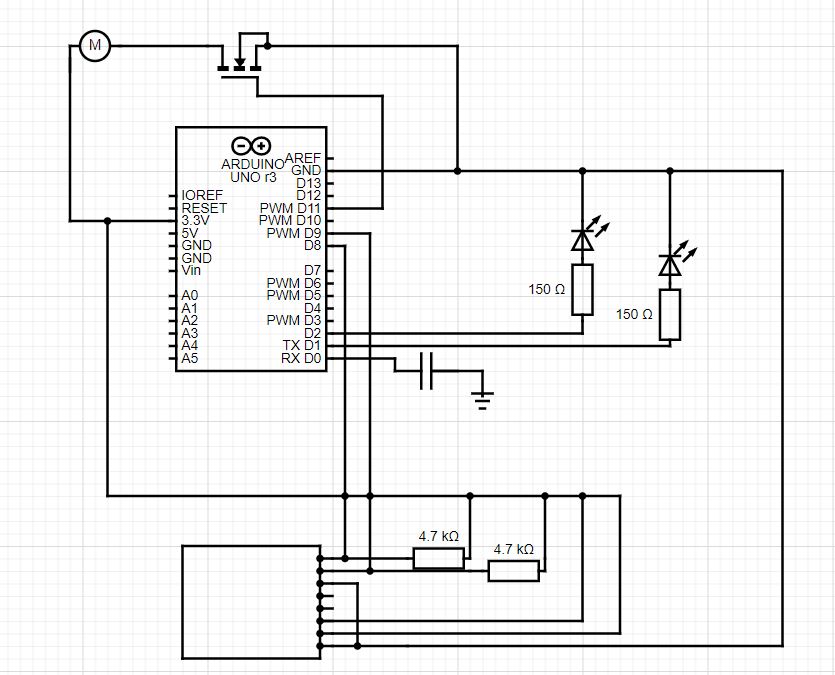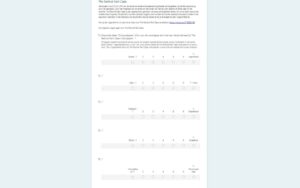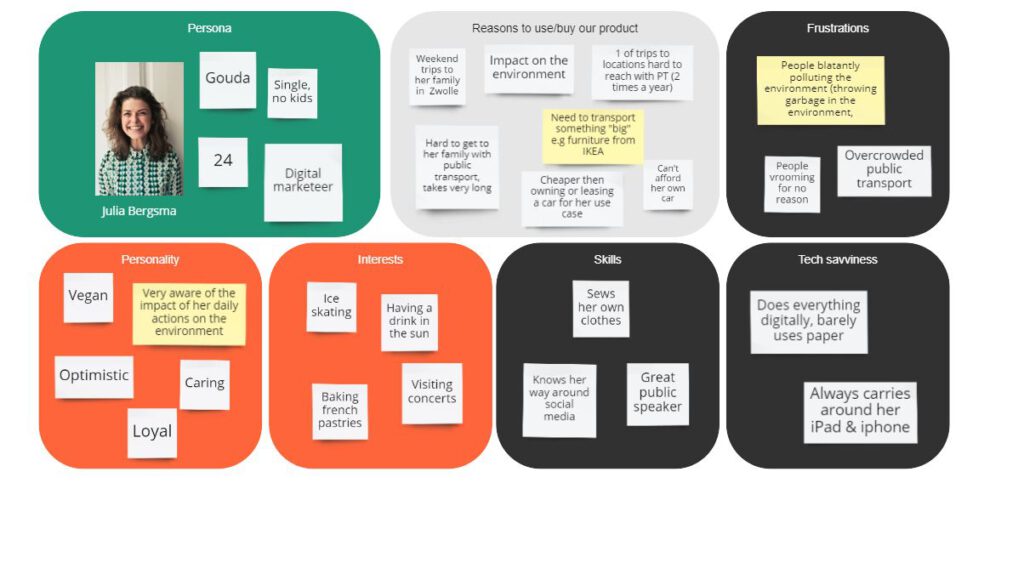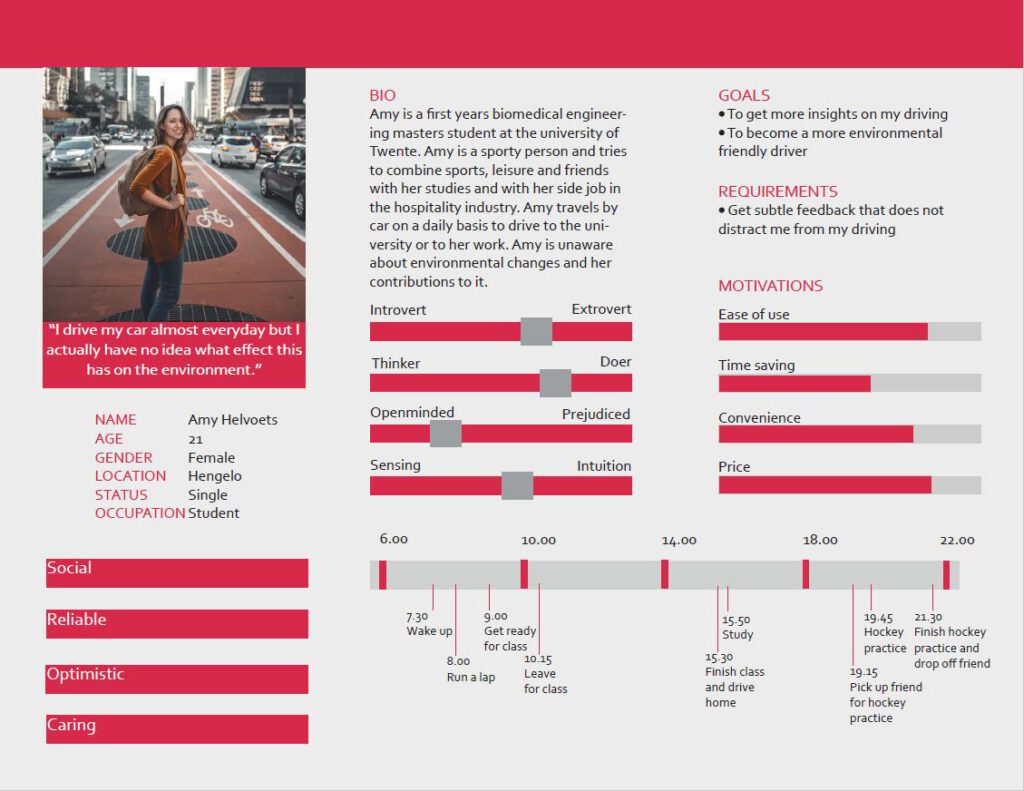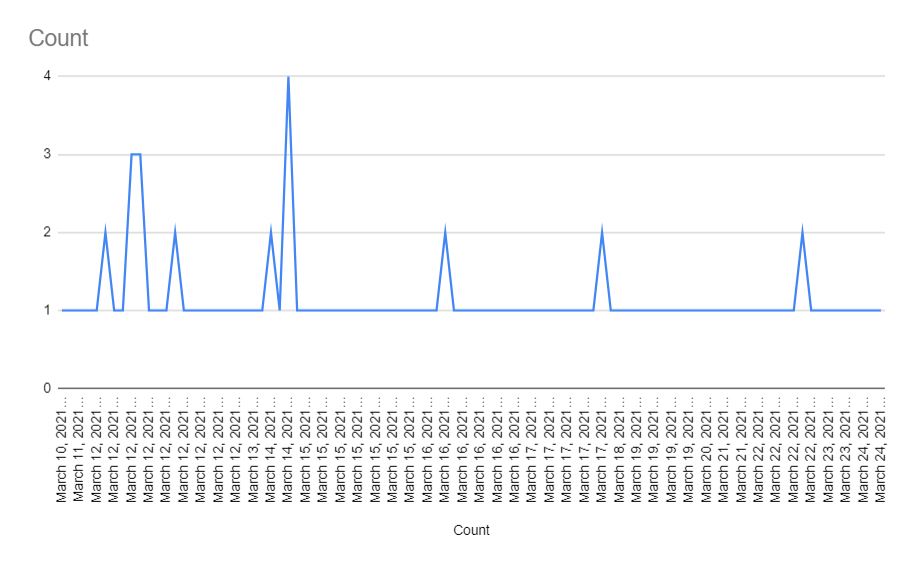Past
Before the start of my final bachelor project I have followed several courses and worked on various projects. Here you can find more information about a selection of these projects.
Present
Throughout my bachelor education I have developed myself as a designer. While all courses and projects have contributed to this, my final bachelor project has also greatly lead me in my development. In my development of the five expertise areas but maybe even more so in the development of my professional skills, design and research processes due to the fact that I worked individually on the project. Here I will describe my development in the expertise areas, professional skills and research processes and I will describe how these areas has been included in my final bachelor project.
Business and Entrepreneurship
The business and entrepreneurship side of this project was integrated by evaluating two different business models. A sustainable business model was explored as well as a more conventional one. Especially the exploration of the sustainable business model was valuable in my development and it was something I had not done before. In this process a value proposition canvas was made, one of the skills I acquired in the courses design innovation methods and in the USE learning trajectory new product development and marketing. Other skills I acquired are analyzing various business aspect such as sales, desirability and market segments with the use of both qualitative and quantitative methods. Examples of these methods are PESTEL and SWOT analyses, data exploration using statistical programming language R, journey mapping, creating service blueprints and stakeholder onion maps. Over the years I have therefore learned that this area is closely related to user and society as aligning the value proposition of the design with the needs of the users is essential to design an effective business model. This is also something that clearly came back in the project and caused the iteration of the business model.
Creativity and Aesthetics
Creativity and aesthetics was integrated in this project mainly through a lot of material and pattern explorations. Making the samples and trying them using a first-person perspective was valuable to analyse the possible interactions you could have with the samples and to see how intuitive these would be. Courses like from idea to design but also past projects have helped me in creating a set of ideation techniques, such as lo-fi prototyping and mindmapping, that were valuable in this exploratory phase. The course aesthetics of interaction has been important in developing my understanding of aesthetics beyond the visual aspect and has also helped me in developing skills to analyse interactions using the Frogger framework. I now see the area of creativity and aesthetics way broader than I initially did and the course aesthetics of interaction was an important contributor to this.
Downloads
Math, Data and Computing
Math, data and computing was included in the project through programming origami patterns in processing and in creating data visualisations of polyester production data. I chose not to go into detail on this aspect of my project as I felt other aspects were more valuable to the development of the project. I did develop and demonstrate my skills in this area in other courses and projects over the past three years. In the courses making sense of sensors and data acquisition and visualizations with embodied sensors I learned how to design data gathering systems for both on-body data gathering as well as contextual data logging systems. I also developed skills in analyzing the data in python notebooks and how to do this all in an ethical way and with a FAIR dataset. This combined makes that I have developed a skillset that I can use to create knowledge from data.
Downloads
Technology and Realization
Technology and realization was integrated in my project through the creation of low and high fidelity prototypes. The prototyping process included more traditional craftsmanship with sewing but the course digital craftsmanship has also helped me explore the intersection between material objects and digital objects. My development in this expertise area has furthermore led me to the creation of experienceable prototypes that can be used for testing. Although no sensors or actuators were included in the prototype of the project, I have demonstrated my skills in this field in other courses such as creative electronics, engineering design and making sense of sensors. I have also learned to see the connection with other areas such as math, data and computing. I developed skills in math, data and computing to create knowledge from data and in technology and realization I have developed skills to gather this data.
User and Society
My development is the area user and society has helped me design according to my vision. In this project this area was integrated in different ways. The problem statement addressed in the project is one on a societal level and the project therefore included research on a more general attitude towards sustainable business models. At the same time a more specific evaluation was done on the actual design of the product. Both users and experts were included in this process. Over the years I have developed skills to understand the user and to evaluate designs. The courses user-centred design and user evaluation methods played a crucial role in this. The electives I chose to follow helped me explore this area in another way. In the course human factors I gathered more knowledge on underlying principles about how the human brain interacts with technology. The course sustainable development in a global context helped me in shaping my vision and it helped me explore the societal part of this area whereas other courses had a greater focus on users.
Professional skills
I believe I have demonstrated and further developed my professional skills in my final bachelor project. Due to the exploratory character of the project reflecting played a major role to not get lost in the process. In other projects reflection mostly took place at the end of a project yet without being aware of it, it also took place throughout the project. In this project reflection happened consciously and knowingly throughout the process. In other projects and courses a reflection mostly had the form of a text with action points for future work, in this project the reflections however had different forms. Examples are annotated pictures of samples or discussions and brainstorm sessions with peers, which I realized are all very accessible methods for reflection. Other professional skills that were heavily integrated in the project were collaboration and communication. While this project was an individual project they still played an important role. In previous projects collaboration mainly meant the collaboration within the group. In this project this was taken further in the sense of collaboration with peers, coaches and also external people. The collaboration with peers and coaches was valuable to gain some perspective on the project you were so deep in. Also the collaboration with external experts was very valuable. This was something I had not done much before but this process has shown me that the right communication can lower the threshold to reach out to these people.
Design and research processes
I see my development in design and research processes mainly in the realization of the need for flexibility. I tried to integrate the design thinking process into my earlier projects as I thought that was the right way to design. However, over time I learned that this process is not the right fit for every project. I learned to see that the design process should be adapted to the context of the project. I still think that the design thinking process can be valuable and can be a structured way of working, especially when you start your project with a clear project brief. The process of this project was however more exploratory at the start which made that the process was a little different than what I was used to and that I could not apply the methods I usually applied. My process was based on the context of the project and while I believe this flexibility is important I also believe there are aspects such as a user-centered perspective that should be included in all or most processes.
